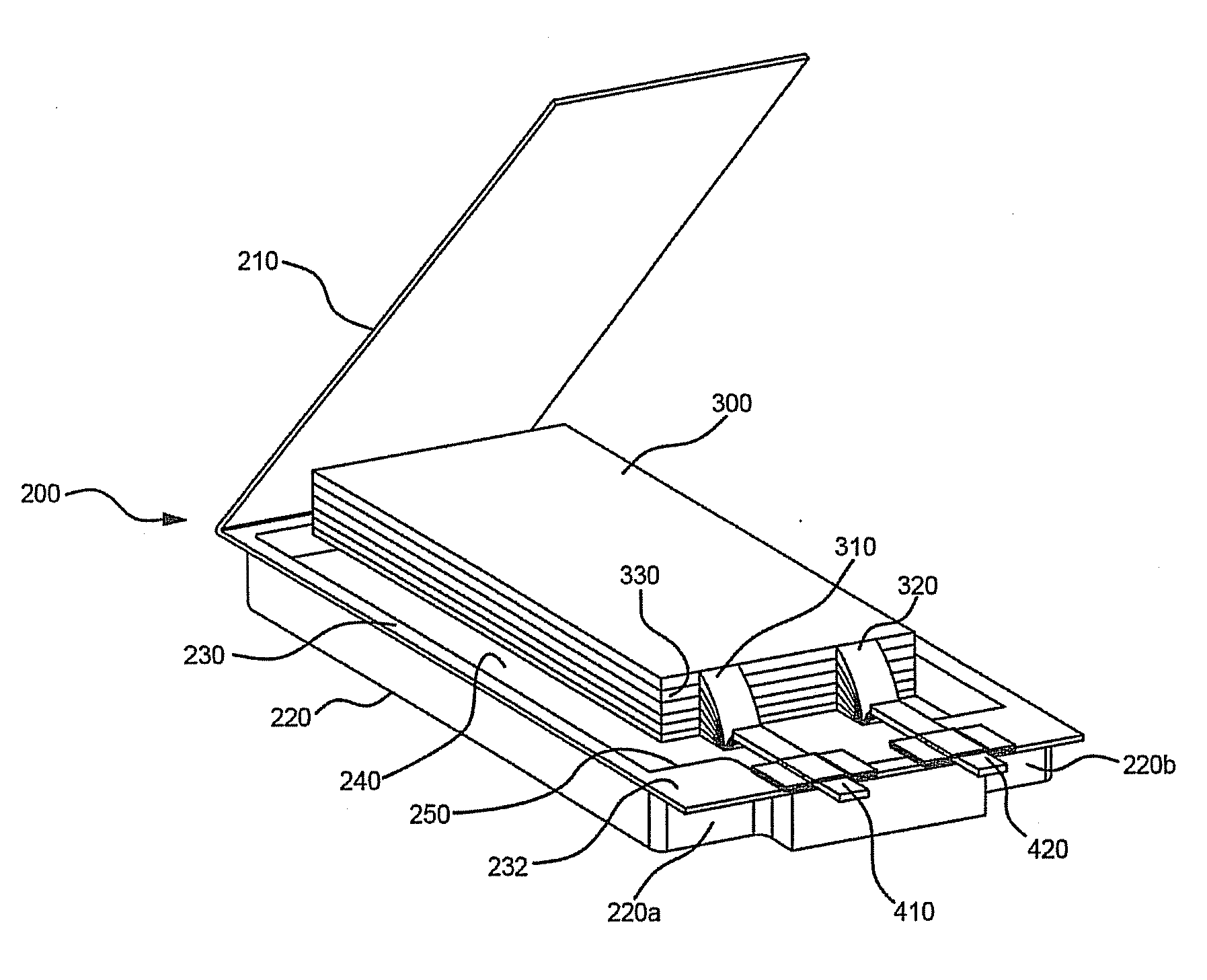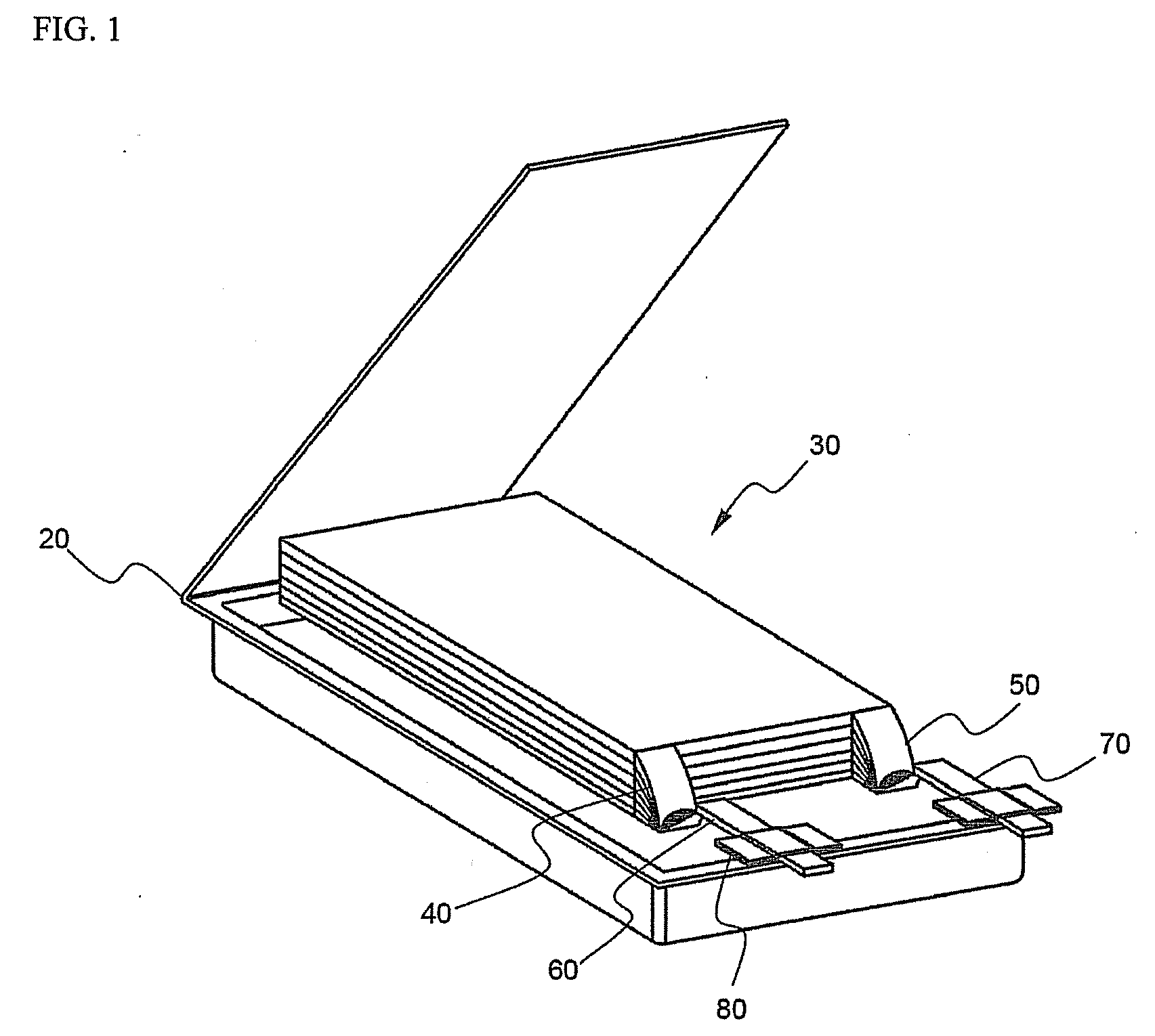Secondary battery of improved safety
a technology of safety and secondary batteries, applied in the direction of cell components, final product manufacturing, sustainable manufacturing/processing, etc., can solve the problems of thermal runaway phenomenon, battery fire or explosion, etc., and achieve the effect of preventing deformation of the depressed step region, low mechanical strength, and easy deformation
- Summary
- Abstract
- Description
- Claims
- Application Information
AI Technical Summary
Benefits of technology
Problems solved by technology
Method used
Image
Examples
Embodiment Construction
[0041]Now, preferred embodiments of the present invention will be described in detail with reference to the accompanying drawings. It should be noted, however, that the scope of the present invention is not limited by the illustrated embodiments.
[0042]FIG. 4 is an exploded perspective view illustrating a pouch-shaped secondary battery according to a preferred embodiment of the present invention, FIG. 5 is a front see-through view illustrating the secondary battery of FIG. 4 in an assembled state, and FIG. 6 is a side see-through view illustrating the secondary battery of FIG. 4 in an assembled state.
[0043]Referring to these drawings, the pouch-shaped secondary battery 200 includes an electrode assembly 300 having cathode taps 310 welded to a cathode lead 410 and anode taps 320 welded to an anode lead 420, a battery case 200 for receiving the electrode assembly 300, and depressed steps 220a and 220b formed at upper end corners of the battery case 200.
[0044]The battery case 200 includ...
PUM
 Login to View More
Login to View More Abstract
Description
Claims
Application Information
 Login to View More
Login to View More - R&D
- Intellectual Property
- Life Sciences
- Materials
- Tech Scout
- Unparalleled Data Quality
- Higher Quality Content
- 60% Fewer Hallucinations
Browse by: Latest US Patents, China's latest patents, Technical Efficacy Thesaurus, Application Domain, Technology Topic, Popular Technical Reports.
© 2025 PatSnap. All rights reserved.Legal|Privacy policy|Modern Slavery Act Transparency Statement|Sitemap|About US| Contact US: help@patsnap.com



